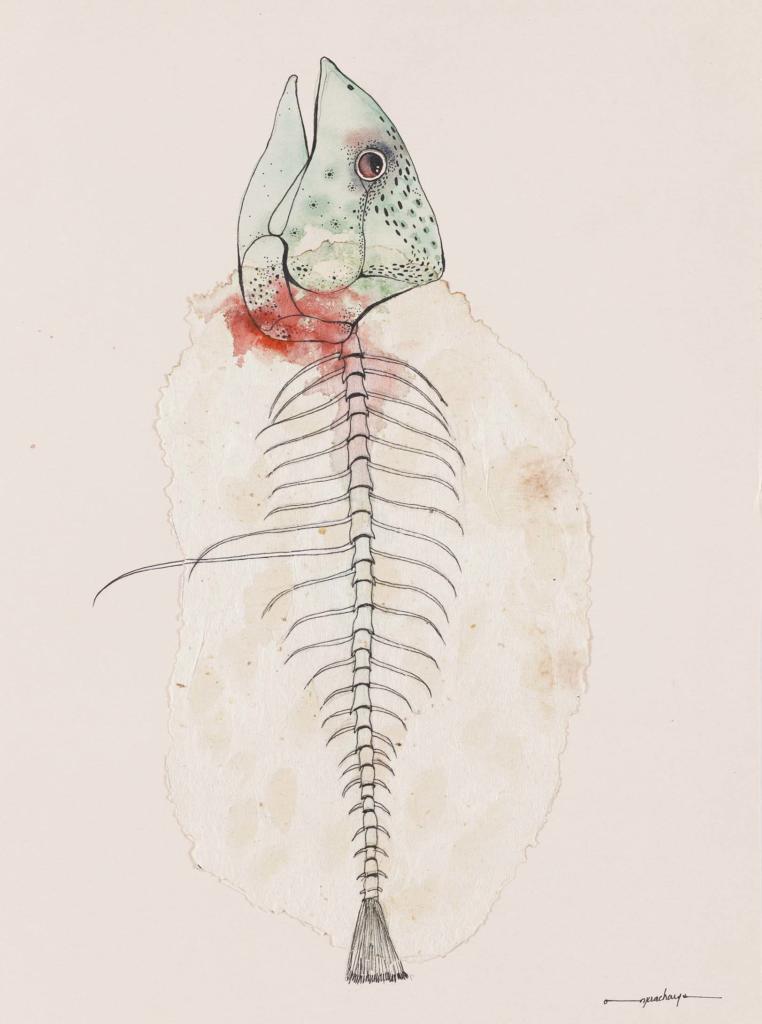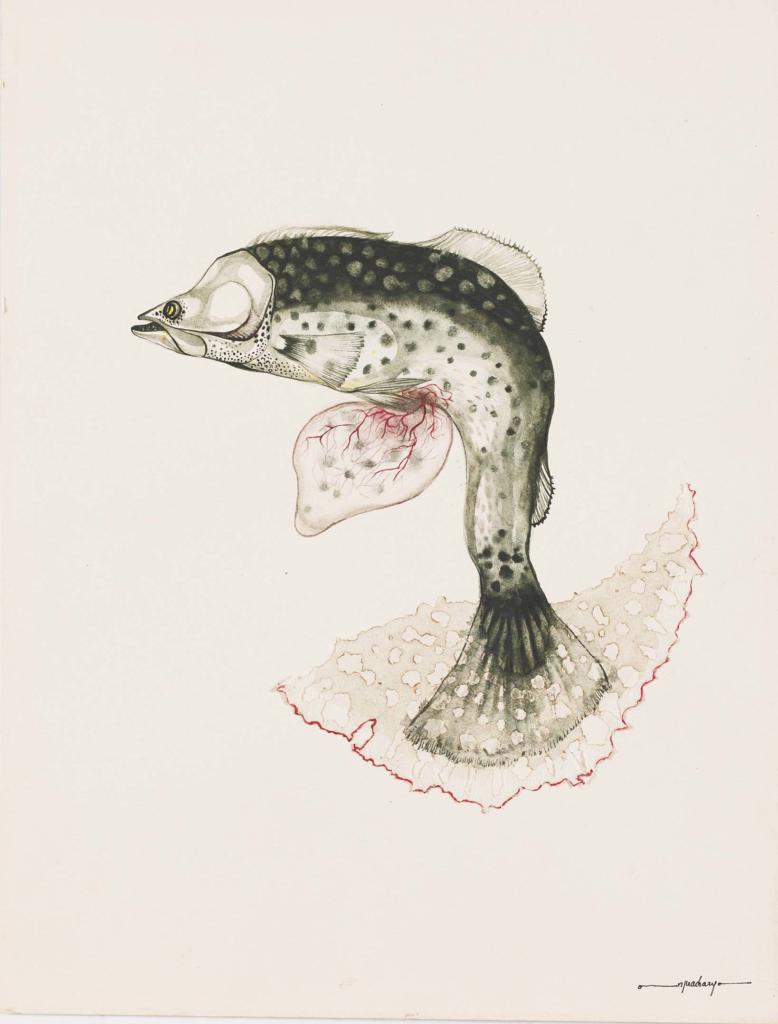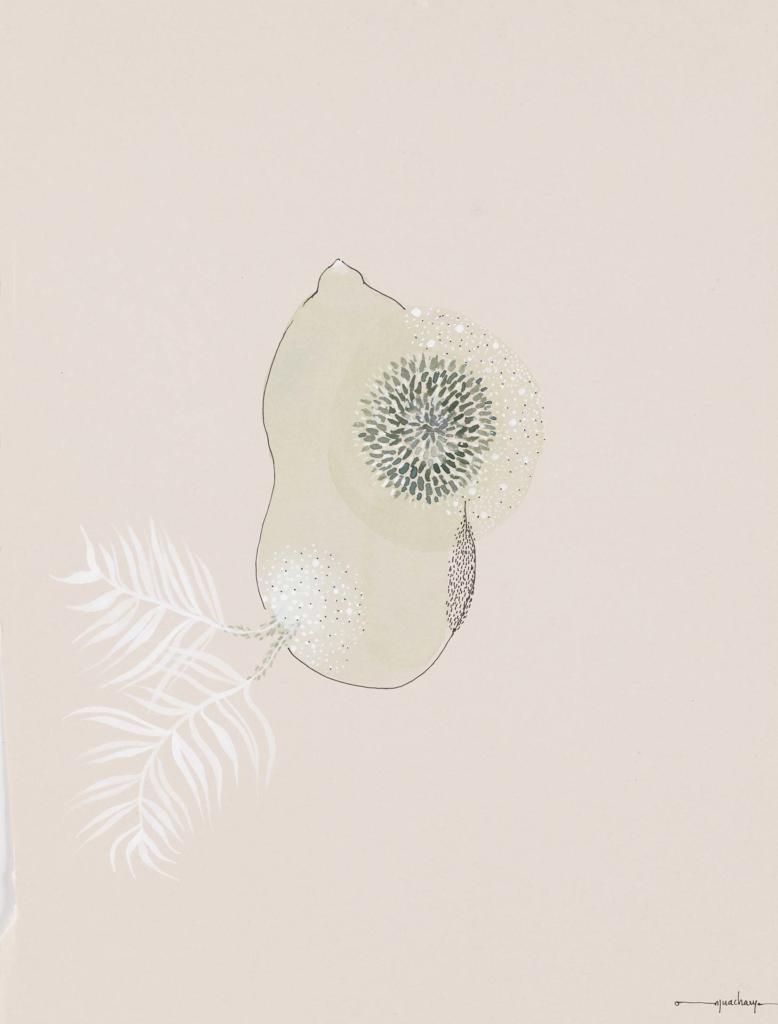
Untitled, undated, watercolour, ink and collaged rice paper on cartridge paper, by Anju Acharya © Sarmaya Arts Foundation
Acharya was a part of our show Shifting Selves – Between meaning, mythology & mirage
“Two factors that have influenced me greatly are my fathers’ drawings [of machine engines] and the subject of bio-maths — creating drawings required by science are more my forte,” says artist Anju Acharya. Born into a blacksmith’s family, Acharya felt a deep connection with her environment even as she scribbled pictures in the mud while growing up, later finding inspiration in cave paintings as well as in the works of artists like Fuyuko Matsui, Kiki Smith and Albrecht Durer.
Drawn to scientific drawings of flora and fauna, Acharya’s work is disguised in an observational gaze, only to reveal itself as a reflection of her own emotionality and sensitivity towards her environment. Her work is a search for shared emotion experienced by all living organisms, and Acharya connects to nature by treating her subjects both observationally and emotionally at the same time. She found this connection to be especially strong during her time at the University of Hyderabad. Her environment guided her through the process of creating, and after finishing her MFA, she exhibited her works at Dileep Narayan’s OED Gallery in Kochi.

Untitled, undated, watercolour, ink and collaged rice paper on cartridge paper, by Anju Acharya © Sarmaya Arts Foundation
Birth, death and decay are overarching themes in Acharya’s work. “One can never be sure of any births — it can only be analyzed and comprehended in terms of death,” she says, further looking at everything in between birth and death as the process of decay. On this understanding leans Acharya’s practice: her subjects, materials and process.
Her work is made all the more powerful by her taking from her personal experience of pregnancy to explore how that connects her to all female organisms in the universe: “Like any other pregnant woman, I also went through many confusions, anxieties, pain and incomprehensible emotions. I started thinking about all other organisms who are in the same stage as me. So I imagined the emotions they may try to communicate and tried to represent them in my works.”

Untitled, undated, watercolour, ink and collaged rice paper on cartridge paper, by Anju Acharya © Sarmaya Arts Foundation
Acharya’s experience of pregnancy developed into her series Unborn which is a dedication to all beings both born and yet to be born in the universe. It is an acknowledgment of the experience of giving birth and a reflection on the relationship between the physical and emotional through shared experiences. Her own body informs her understanding of the world and therefore her practice: “When I stitch, I feel like I am doing it over my own skin. This is because I consider my body itself as the medium for my artwork. Each time I feel pain, I make a scratch on this medium and the result gives me a sort of ecstasy.”
Born in the ’90s, the artist has seen the impact of climate change on numerous species, resulting in a drastic decline in numbers as well as mutations and death caused both by natural and manmade factors. This led to Acharya’s choice of materials and subject matter: “In the initial stages I preferred acrylic, even though my subjects were mostly taken from nature and its emotions. Eventually, I realized that my actions and medium do not fit together. This led me to self-introspection and I turned to nature itself for material.” It was a realization that added layers of meaning and materiality to Acharya’s work.
She uses natural materials like human hair, blood, beetle wings, flower extracts, threads and rice paper to create delicate yet powerful images. The fragile quality of her work expresses a strong deliberate choice, both of material and meaning, and as Acharya’s process does not follow a strict procedure, the unpredictability of her final image allows her flexibility with her mediums. Her work presents itself in the most intriguing ways, alluding to the circle of life and its significance in nature, connecting everything around us. Through her work, Acharya places her sensitivity and observations away from humans and yet connects it deeply to the human experience, situating the viewer both as an observer as well as an empath.



